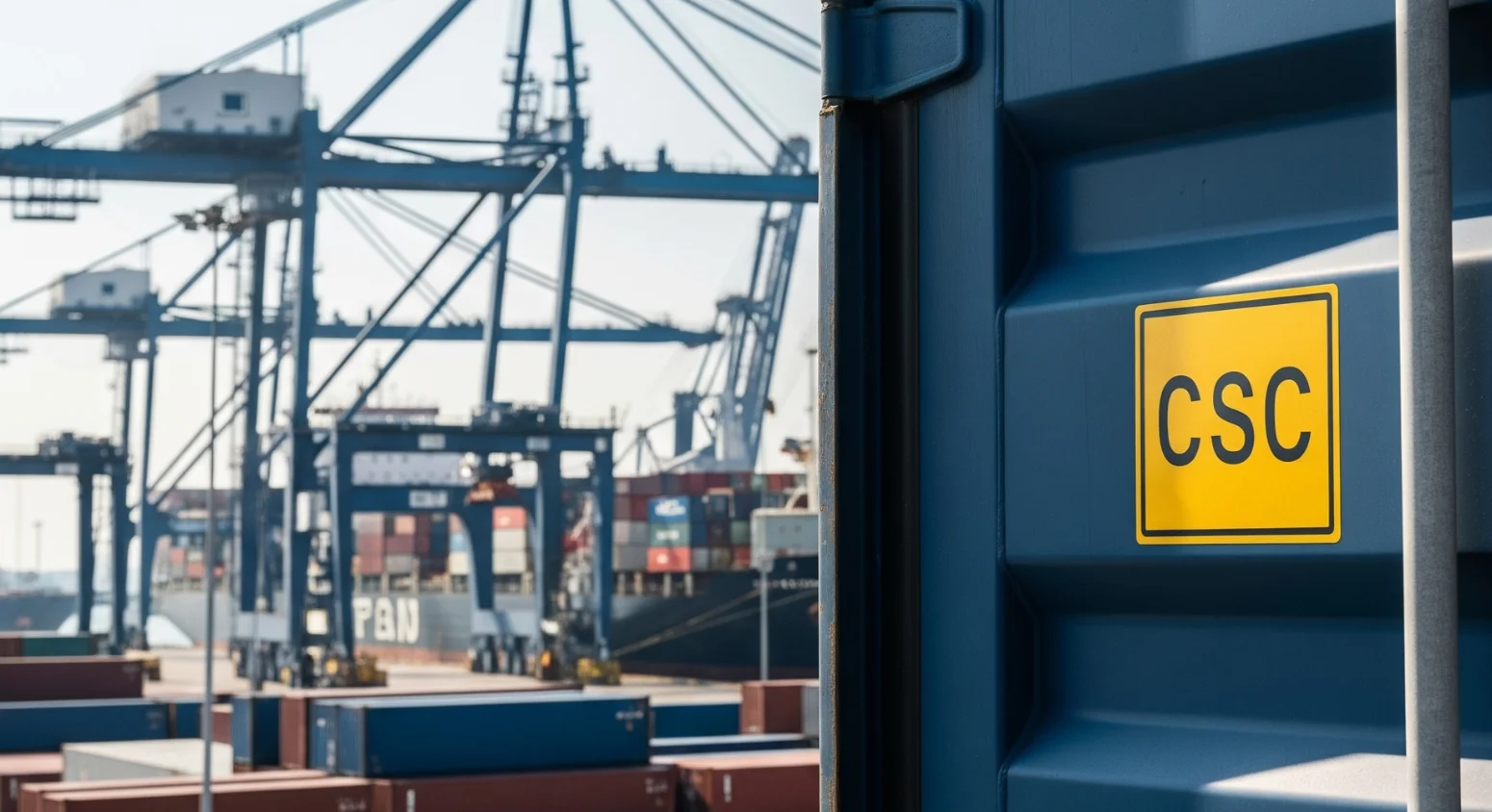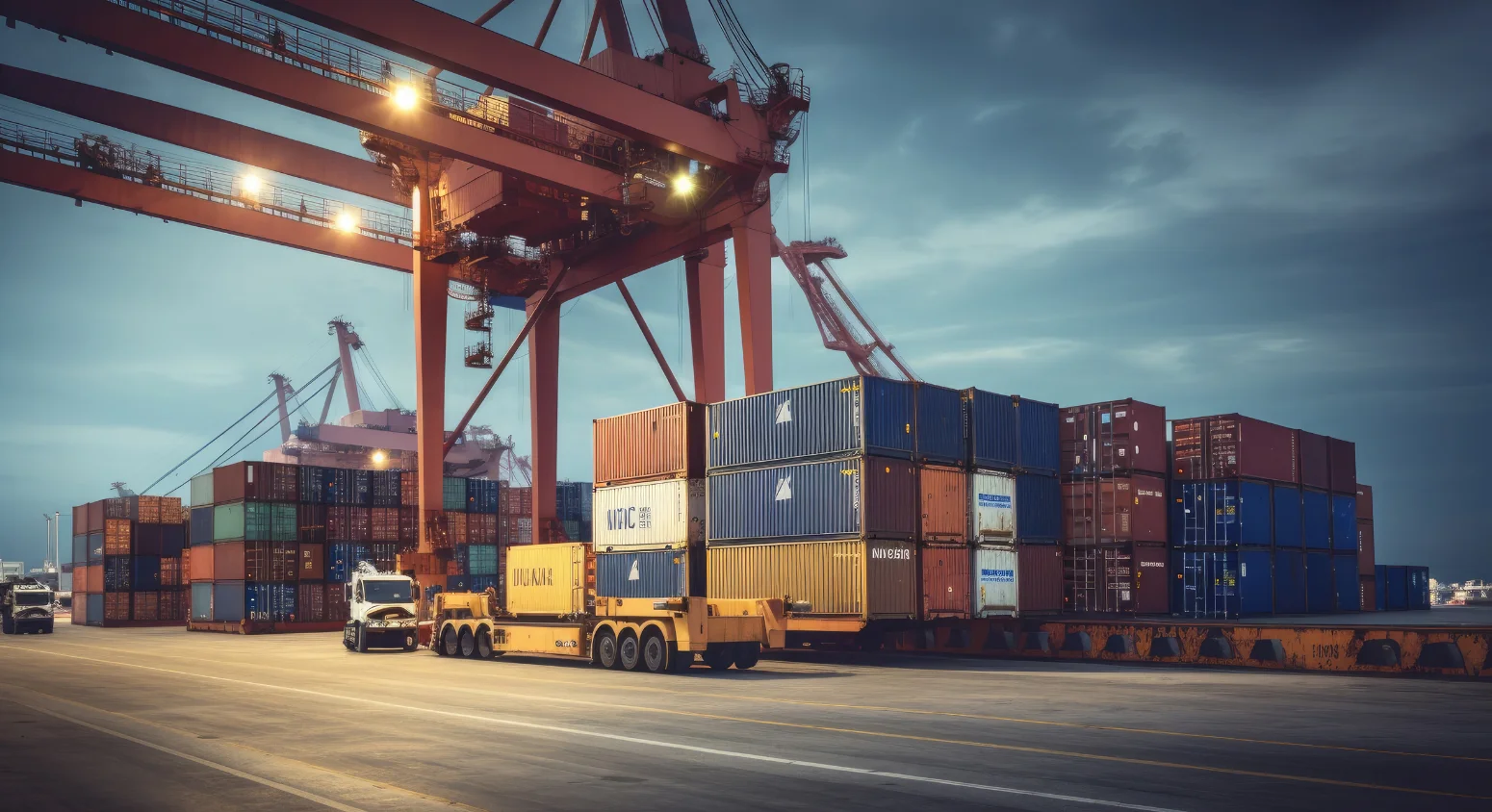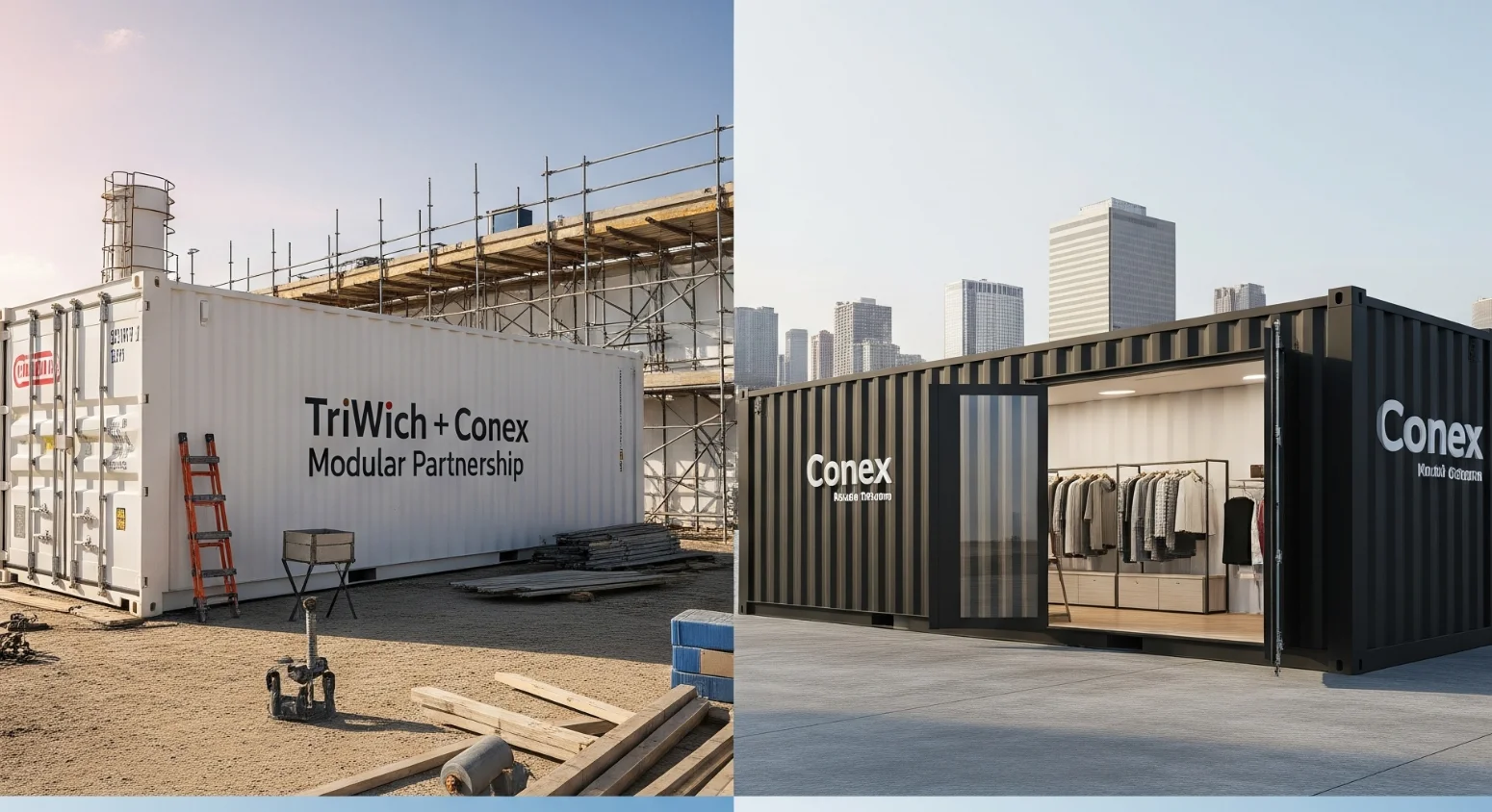Have you ever wondered why some shipping containers glide through customs while others are held back for unexpected inspections—or worse, denied clearance altogether? The answer often comes down to something many overlook: Shipping Container Certification.
In today’s global trade environment, the integrity and compliance of your container matter just as much as what’s inside it. Whether you’re a first-time exporter or a seasoned logistics expert, understanding what a shipping container certification is can save you from delays, fines, and even lost business. But certification isn’t just a bureaucratic hurdle—it’s a validation of safety, quality, and international trust.
This guide will walk you through everything you need to know about container certification for export. From global standards like the Container Safety Convention Certification to specialized programs such as ACEP Certification and ISO Certification, we’ll unpack the essentials, clarify common misconceptions, and help you navigate the complex—but necessary—process of global compliance.
So, if you’re asking yourself how to get shipping container certification or wondering if your container is truly ready for export, you’re in the right place. Let’s dive in.
1. The Basics of Shipping Container Certification
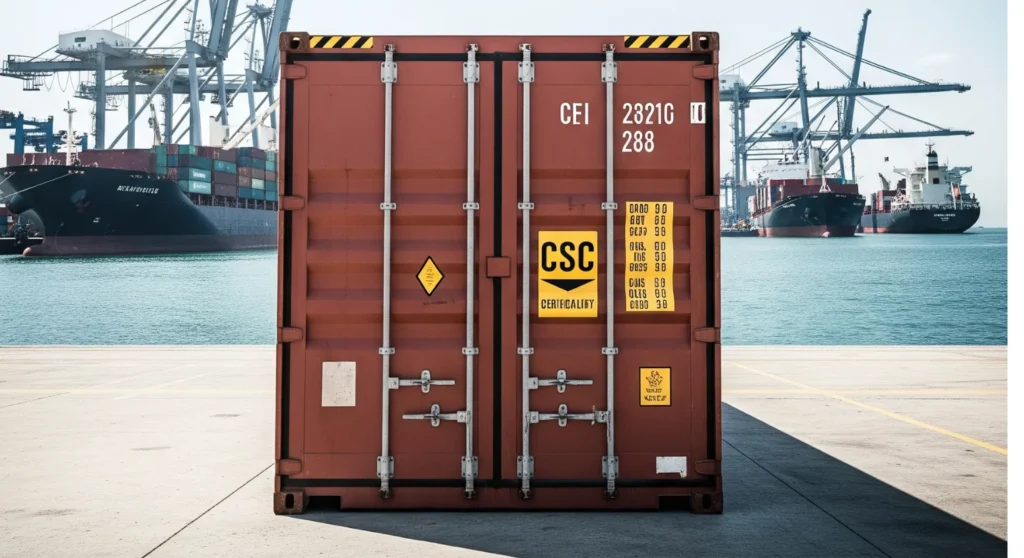
If you ship goods across countries, you’ve probably heard the term Shipping Container Certification. But what does it really mean, and why is it so important?
What Is a Shipping Container Certification?
A shipping container certification is proof that a container is safe and strong enough to carry goods internationally. It shows that the container has been inspected and approved by global safety standards. This certification isn’t just a formality—it helps your container move smoothly across borders without delays or legal issues.
Why Is It Important?
Having a certified container helps you:
- Clear customs faster
- Avoid fines or rejections at ports
- Keep your cargo safe during transport
- Build trust with buyers and shipping partners
Without the right container certification, your shipment could be held up or even turned away.
Who Sets the Rules?
The most common certification comes from something called the Container Safety Convention Certification. It’s managed by a global organization that makes sure containers are safe for shipping. Containers that pass these checks get a metal plate, called a CSC plate, attached to them.
Another important standard is ISO Certification, which makes sure containers are built the same way around the world. This helps containers fit perfectly on ships, trucks, and trains.
What’s on the CSC Plate?
This metal plate is attached to the container and includes key information like:
- When the container was made
- How much weight it can safely carry
- Its identification number
- When it was last inspected
All of this shows that the container is safe and ready to ship.
Knowing what a shipping container certification is gives you a clear advantage. It means fewer delays, safer shipments, and better business. In the next section, we’ll look at the different types of certifications you might need.
Ready to simplify container handling and boost your efficiency? Discover TriWich’s full range of innovative solutions: LiftWich for easy container lifting, HitchWich for secure towing, Tri-Up for safe stacking, AnyWich for versatile mobility, and Wheel Dollies for smooth transport in tight spaces. Explore all products now and transform how you move containers!
2. Key Types of Export Certifications
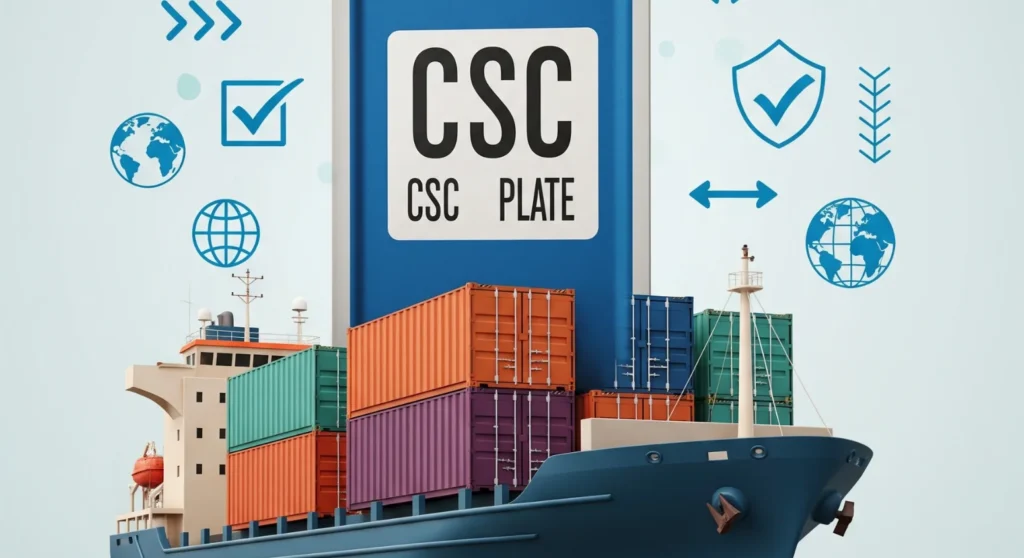
Not all container certifications are the same. In fact, there are several types you need to be aware of—each serving a specific purpose in global shipping. So, which one do you need for your container? Let’s walk through the most common types and what they mean for your exports.
CSC Certification: The Global Standard
The Container Safety Convention Certification (also known as CSC certification) is the most widely accepted type of shipping container certification in the world. Issued under the International Maritime Organization, this certification confirms that a container meets key safety standards for international transport.
If your container has a CSC plate, it means:
- It passed a full safety check
- It’s allowed on ocean-going vessels
- It’s legal for use in global trade
This is the foundation of safe and legal container use.
ACEP Certification: A Long-Term Option
Have you heard of ACEP Certification? It stands for Approved Continuous Examination Program. Instead of checking containers every few years, companies with ACEP status can monitor their containers regularly as part of their normal operations.
This is ideal if:
- You own or manage a large fleet of containers
- You want to avoid repeating full inspections
- You already follow strict internal safety procedures
It still counts as valid container certification, but it gives businesses more flexibility.
ISO Certification: For Standard Sizes and Strength
ISO Certification focuses more on how containers are built. Containers with this certification follow exact rules for size, strength, and structure. This ensures they fit neatly on ships, trucks, and trains without any trouble.
Why it matters:
- Easy stacking and handling
- Lower risk of damage during transport
- Seamless global compatibility
While ISO rules aren’t always required for every shipment, they support smooth logistics and safe movement—especially for international loads.
Choosing the Right Certification
So, how do you know which shipping container certification is right for your needs? It depends on:
- Where you’re shipping to
- Whether you own or rent the container
- The age and condition of the container
- How often the container will be used
If you’re unsure, it’s always wise to check with your freight forwarder or shipping partner. And if you’re still wondering how to get shipping container certification, don’t worry—we’ll cover that step-by-step later in the blog.
Understanding these certifications helps you stay compliant, avoid fines, and ship with confidence.
3. How the Certification Process Works
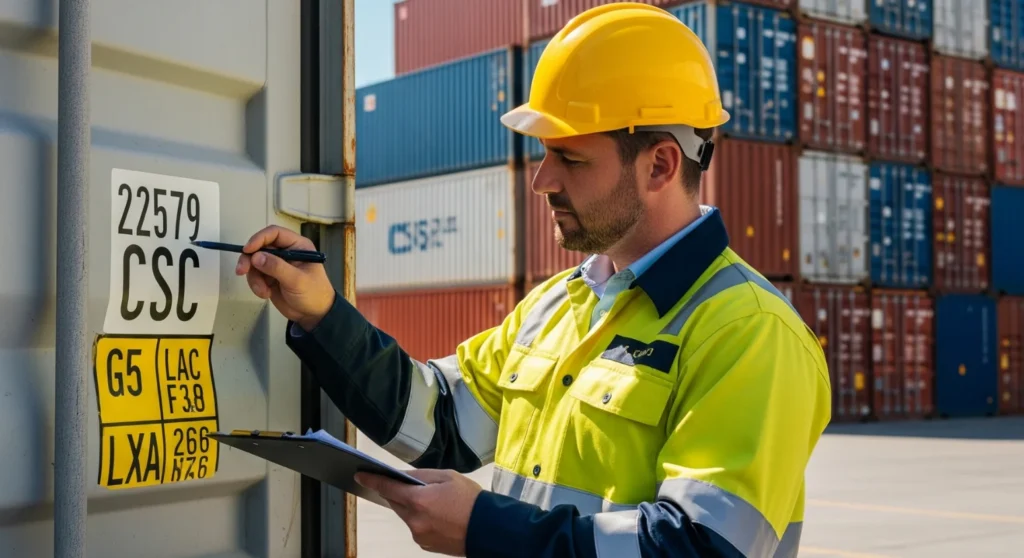
Now that you know the different types of shipping container certification, let’s explore how the process actually works. If you’re asking how to get shipping container certification, you’re not alone. Many shippers and businesses find this part confusing—but it doesn’t have to be.
Getting certified isn’t just about ticking boxes. It’s about making sure your container is safe, reliable, and ready for the demands of international transport.
Step-by-Step: How to Get Shipping Container Certification
Here’s a clear breakdown of what typically happens:
- Initial Inspection
A certified inspector checks the container’s condition. They look for structural damage, rust, door problems, and more. - Compliance Check
The container is tested against safety rules from the Container Safety Convention Certification. It must meet strict requirements for strength, handling, and stacking. - Issuance of the CSC Plate
If the container passes inspection, a CSC plate is attached. This is your official proof of container certification. - Documentation and Records
You receive paperwork confirming the container’s status. It includes the inspection date, certification details, and any notes on repairs. - Re-inspection or Maintenance (When Needed)
Depending on the type of certification, containers may need periodic checks. For example, a standard CSC certification usually requires inspection every 30 months.
What Inspectors Look For
During the inspection, experts check several important parts of the container:
- Floor and roof condition
- Corner castings and locking points
- Door function and seals
- Structural frame and panels
- Signs of corrosion or previous damage
Even a small crack or loose hinge can cause a container to fail its certification test.
How Long Does Certification Last?
- CSC-certified containers typically stay valid for 30 months before needing a re-inspection.
- Containers under ACEP certification are monitored continuously, often as part of a company’s regular maintenance routine.
Always check the date on the CSC plate or your certification paperwork to stay up to date.
Common Mistakes to Avoid
When it comes to container certification, here are a few things that trip up exporters:
- Assuming a container is certified just because it looks fine
- Ignoring expired certifications
- Not verifying documents when renting or buying used containers
- Overlooking the specific rules for the country you’re exporting to
By following the process carefully, you’ll protect your cargo, stay compliant with international rules, and avoid costly delays. Getting a shipping container certification is easier when you know the steps—and now, you do.
Also Read: Key Considerations for Safely Moving Heavy Loads
4. Ensuring Compliance and Avoiding Export Delays

You’ve chosen the right container. You’ve gone through the certification process. But how do you stay compliant and keep your exports moving without hiccups? In international trade, small oversights can lead to big delays—and that’s something no one wants. Keeping your shipping container certification up to date is just the beginning.
Who Is Responsible for Certification?
Whether you’re an exporter, freight forwarder, or logistics coordinator, someone has to make sure that each container used for export meets certification standards.
Here’s a simple way to look at it:
- If you own the container, it’s your responsibility to get it certified and maintain its compliance.
- If you’re leasing or renting, always request proof of valid container certification before using it.
Never assume a container is certified just because it looks good or was fine last time. A quick check of the CSC plate and paperwork can save you from costly mistakes.
Risks of Using Non-Certified Containers
It might be tempting to skip the certification or use an uncertified container “just this once,” especially if time is tight. But the risks aren’t worth it.
Here’s what could happen:
- Customs delays at the port of entry or exit
- Fines and penalties from international regulatory bodies
- Insurance rejections in case of cargo damage
- Increased liability for your company
Using a container without a valid shipping container certification puts your cargo—and your reputation—at risk.
How to Check Certification Status Quickly
Not sure if a container is certified? Here are a few fast ways to find out:
- Look for the CSC plate – It’s usually located on the container doors.
- Check the inspection date – Certification expires after a certain period.
- Request official documents – Especially if you’re leasing or working with third-party shippers.
- Verify through digital tracking systems – Many logistics companies now offer tools that show container status in real time.
Work With Certified Partners
One of the easiest ways to ensure compliance is by working with suppliers and logistics providers who specialize in certified containers. These partners will handle:
- Regular inspections
- Documentation updates
- Re-certifications when needed
Ask your provider about their process for maintaining shipping container certification—it shows you’re serious about doing things right.
By staying alert and organized, you’ll keep your operations smooth and your cargo moving. Compliance isn’t just about avoiding problems—it’s about building trust, staying competitive, and protecting every shipment from the ground up.
Explore: Best Practices for Storing and Stacking Containers
Conclusion
Understanding shipping container certification is more than just a step in your shipping process—it’s something that can save you time, money, and headaches. Now that you know what a shipping container certification is, the main types, how to get certified, and how to keep everything up to date, you’re better prepared to handle your shipments with confidence.
Ask yourself: Are your containers really certified? Are you ready to avoid delays and fines? Taking care of your container certification protects your goods, your schedule, and your business reputation.
Certification doesn’t have to be confusing once you know the process. It helps make sure your shipments move smoothly across borders and stay safe. Whether you’re new to exporting or want to improve your shipping, keeping up with container certification is a smart choice for your business.
FAQS
How often do I need to renew shipping container certification?
Most certifications, like CSC, need to be renewed every 30 months. Some programs, like ACEP, allow ongoing checks so full inspections happen less often.
Can I export goods without a certified container?
Using an uncertified container is risky and often not allowed. It can cause delays, fines, or your shipment getting turned away at customs.
What information does the CSC plate show?
The CSC plate proves the container meets safety rules. It includes the build date, max weight, and inspection dates.
Who is responsible for making sure the container is certified?
The container owner must keep it certified. If you rent or lease a container, always ask for proof of valid certification before using it.
